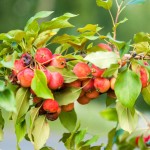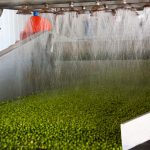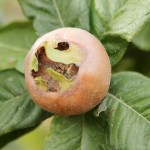
Training trees as cordons produces a useful fruit crop in even the smallest gardens. Cordons have a single straight stem with short sideshoots or fruiting spurs. they can be trained vertically or angles to 45 degrees, which helps reduce vigour and encourage fruiting laterals. Apples, pears, plums, and soft fruit such as red and white currants and gooseberries, which all grow well as cordons.
Apples and pears must be on dwarfing rootstocks for cordons. On fertile soils choose ‘M27’ or ‘M9’ apple rootstocks; M26 on poorer soils. pears are best on ‘Quince C’ or on poor soils, ‘Quince C’.
Training Cordons
Cordons need permanent support from either walls or fences, or posts and wires. Apple and pear cordons can be allowed to reach 1.5-2m, spaced 60 to 90cm apart.
Plant in the dormant season, staking the trunk and stretch horizontal; support wires spaced 60cm apart. At planting, cut back all laterals (side branches) longer than 10cm to three buds. Leave the leader and short laterals unpruned.
Cordons should be summer pruned in mid-August, as this should prevent the growth of frost-prone secondary growth. Prune all the shoots longer than 23cm, cutting back laterals growing from the main stems yo three leaves. Cut back side shoots from laterals to one leaf above their basal leaf cluster. take back late growth to one bud in September. Thin out congested fruiting spurs on established trees in winter.



Leave a Reply